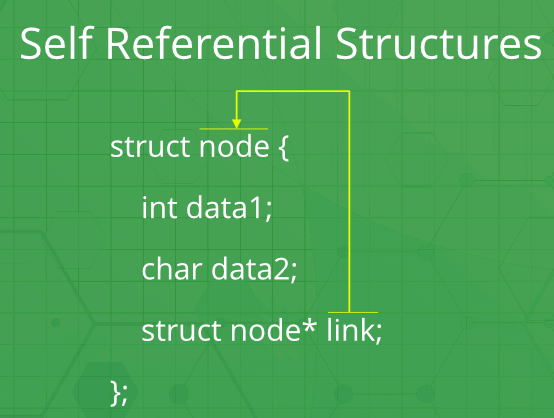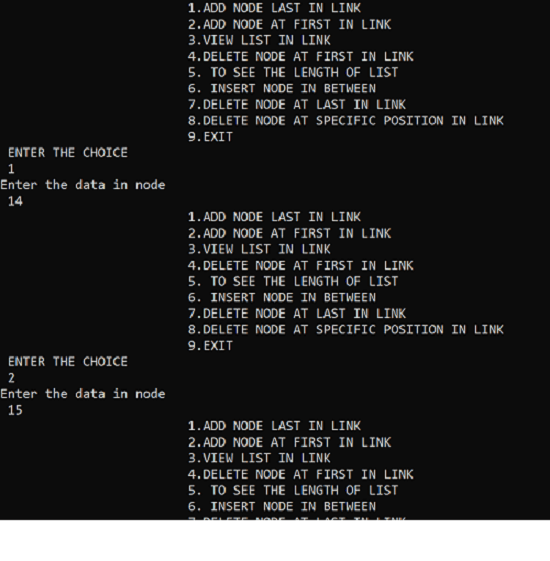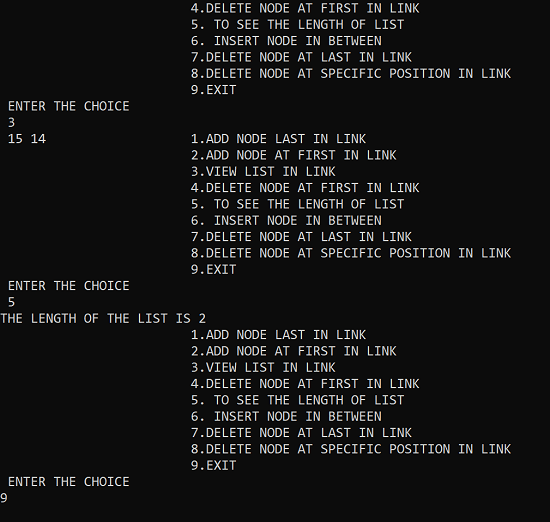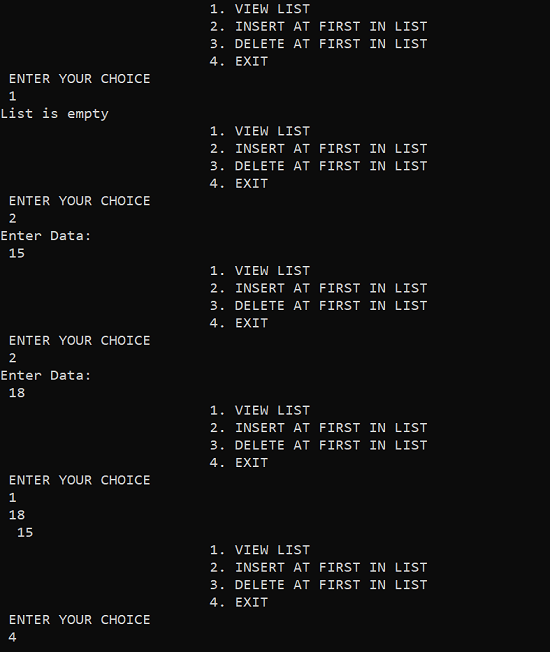Self-referential structure
The self-referential structure is a structure that points to the same type of structure. It contains one or more pointers that ultimately point to the same structure.
- Structures are a user-defined data structure type in C and C++.
- The main benefit of creating structure is that it can hold the different predefined data types.
- It is initialized with the struct keyword and the structure’s name followed by this struct keyword.
- We can easily take the different data types like integer value, float, char, and others within the same structure.
- It reduces the complexity of the program.
- Using a single structure can hold the values and data set in a single place.
- In the C++ programming language, placing struct keywords is optional or not mandatory, but it is mandatory in the C programming language.
- Self-referential structure plays a very important role in creating other data structures like Linked list.
- In this type of structure, the object of the same structure points to the same data structure and refers to the data types of the same structure.
- It can have one or more pointers pointing to the same type of structure as their member.
- The self-referential structure is widely used in dynamic data structures such as trees, linked lists, etc.

Why do we require a Self-referential structure?
Self-referential structure plays a vital role in the linked list, trees, graphs, and many more data structures. By using the structure, we can easily implement these data structures efficiently. For defining a particular node, the structure plays a very important role. In a linked list, the structure is used to store the data information and the address of the next node in the given linked list. Mainly the data part is of integer type, and the link address part is of pointer type, which holds the address of the next node, so that it can for the Link ultimately.
As we all know, the role of a linked list is used to store the data elements of the same type, in which address locations are not at the consecutive difference. In this linear linked list, the current node holds the address of the next node so that it ultimately forms the Link between the current node and the next node.
Here in the linked list, we will define a common structure, which contains the data and address pointer to carry the address of the next node, so to form the multiple nodes, we from each node using the node structure.
Unlike a static data structure such as an array where the size of the array limits the number of elements that can easily to inserted into the array, a self-referential structure can dynamically be expanded or contracted.
Operations like the insertion or deletion of nodes in a self-referential structure involve straightforward alteration of pointers.
Linked list
- A linked list is a useful data storage method, and it is very easy to implement it in C programming Language.
- Several kinds of linked lists, including single linked lists, double linked lists, and binary trees.
- Each type is suited for certain types of data storage.
- The one thing that these lists have in common is that the links between data items are defined by the information contained in the items themselves, in the form of pointers.
- The linked list is distinctly different from arrays, in which the links between data items result from the layout and storage of the array.
Here, we will discuss the self-referential structure in more detail using the linked list concepts.
Let’s understand the concept of self-referential structure in more detail using the example mentioned below:
Example 1: Creating a random self-referential structure in the C programming language.
Example 2: Creating a random self-referential structure in a python programming language.
Types of self-referential structure
- Single Link self-referential structure
- Multiple Link self-referential structures
Single Link self-referential structure
As the name suggests, we can easily predict that these structures consist of a single Link, mainly the only one pointer link of structure type pointing to the same structure. To better understand it, we can connect this concept with the singly linked list.
In a singly linked list, there is only a single pointer that carries the address of the next node, and that pointer variable is of the structure node type itself. It is mainly used when we want to store the different data items by fetching out them from various addresses and connecting all of them by storing the address of one data item into the linked part of the other node. In this way, we can easily connect all the data items by using these connecting links.
Let’s look at the working of single link self-referential structure with the help of an example:
The output of the above program is:


The output of the above program is:
36 24
Multiple Link self-referential structures
As the name suggests, we can easily predict that these types of the structure consist of multiple Link, here we will make use of two pointer links of structure type which is pointing to the same structure, to understand it better, we can connect this concept with a doubly-linked list.
In a doubly-linked list, two single pointers carry the address of the next node and the previous node, and that pointer variable is of the structure node type itself. It is mainly used when we want to store the different data items by fetching out them from various addresses and connecting all of them by storing the address of one data item into the linked part of the other node; in this way, we can easily connect all the data items by using these connecting links.
Let us look at the working of, multiple link self-referential structure with the help of an example:
The output of the above program is:

The output of the above program is:
15 20 25 15 20 25 15 20 25
